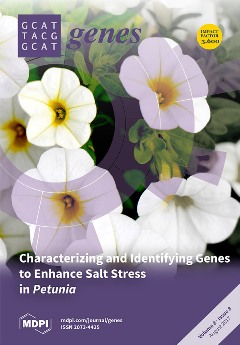Purpose: To identify the gene defect and to study the clinical characteristics and natural course of disease in a family originally diagnosed with oligocone trichromacy (OT), a rare congenital cone dysfunction syndrome. Methods: Extensive clinical and ophthalmologic assessment was performed on two siblings with OT and long-term follow up data were analyzed. Subsequently, whole exome sequencing (WES) and Sanger sequence analysis of
CEP290 was performed in the two siblings. Additionally, the identified
CEP290 mutations were analyzed in persons with achromatopsia (ACHM) (
n = 23) and autosomal recessive or isolated cone dystrophy (CD;
n = 145). Results: In the first decade of life, the siblings were diagnosed with OT based on low visual acuity, photophobia, nystagmus, and absent cone response on electroretinography , but with normal color discrimination. Over time, the phenotype of OT evolved to a progressive degenerative disease without any
CEP290-associated non-ocular features. In both siblings, two nonsense mutations (c.451C>T; p.(Arg151*) and c.4723A>T; p.(Lys1575*)) in
CEP290 were found. Previously, p.(Arg151*) was demonstrated to induce nonsense-mediated alternative splicing events leading to intact open reading frames of the resulting mRNA products (p.(Leu148_Glu165del) and p.(Leu148_Lys172del)). mRNA analysis for p.(Lys1575*) confirmed a suspected hypomorphic character, as exon 36 skipping was observed in a small fraction of
CEP290 mRNA, resulting in a 36 aa in-frame deletion (p.(Glu1569_Trp1604del)). No additional cases carrying these variants were identified in the ACHM and CD cohorts. Conclusions: Compound heterozygous hypomorphic mutations in
CEP290 may lead to a rare form of cone-dominated retinal dystrophy, a novel phenotype belonging to the
CEP290-associated spectrum of ciliopathies. These findings provide insight into the effect of
CEP290 mutations on the clinical phenotype.
Full article






